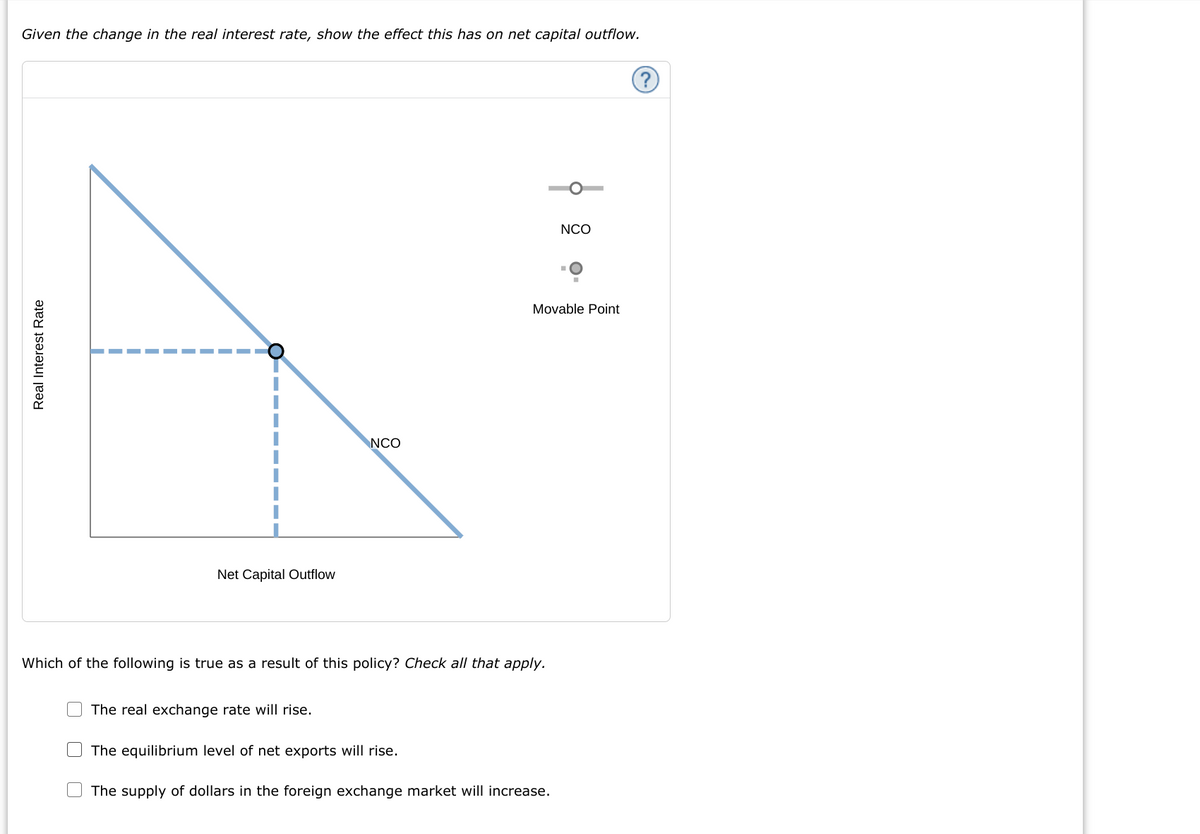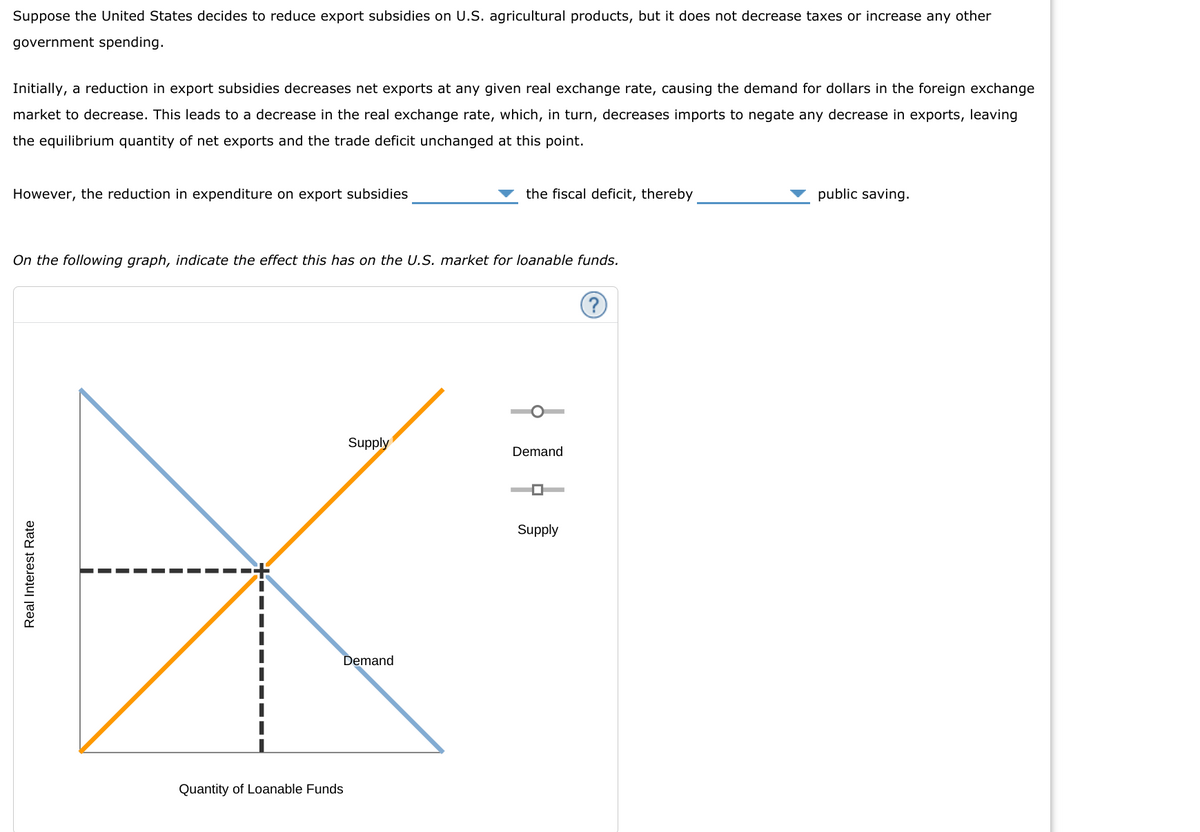uppose tne Onited States decides to reduce export agricuiturai products, but it dde government spending. nitially, a reduction in export subsidies decreases net exports at any given real exchange rate, causing the demand for dollars in the foreign exchange market to decrease. This leads to a decrease in the real exchange rate, which, in turn, decreases imports to negate any decrease in exports, leaving the equilibrium quantity of net exports and the trade deficit unchanged at this point. However, the reduction in expenditure on export subsidies v the fiscal deficit, thereby public saving. On the following graph, indicate the effect this has on the U.S. market for loanable funds. Supply Demand Supply Demand Quantity of Loanable Funds Real Interest Rate
uppose tne Onited States decides to reduce export agricuiturai products, but it dde government spending. nitially, a reduction in export subsidies decreases net exports at any given real exchange rate, causing the demand for dollars in the foreign exchange market to decrease. This leads to a decrease in the real exchange rate, which, in turn, decreases imports to negate any decrease in exports, leaving the equilibrium quantity of net exports and the trade deficit unchanged at this point. However, the reduction in expenditure on export subsidies v the fiscal deficit, thereby public saving. On the following graph, indicate the effect this has on the U.S. market for loanable funds. Supply Demand Supply Demand Quantity of Loanable Funds Real Interest Rate
Chapter4: The Aggregate Economy
Section: Chapter Questions
Problem 5E
Related questions
Question
This is the second part of the previous question I asked, I either get most right or wrong

Transcribed Image Text:Given the change in the real interest rate, show the effect this has on net capital outflow.
NCO
Movable Point
NCO
Net Capital Outflow
Which of the following is true as a result of this policy? Check all that apply.
The real exchange rate will rise.
The equilibrium level of net exports will rise.
The supply of dollars in the foreign exchange market will increase.
Real Interest Rate

Transcribed Image Text:Suppose the United States decides to reduce export subsidies on U.S. agricultural products, but it does not decrease taxes or increase any other
government spending.
Initially, a reduction in export subsidies decreases net exports at any given real exchange rate, causing the demand for dollars in the foreign exchange
market to decrease. This leads to a decrease in the real exchange rate, which, in turn, decreases imports to negate any decrease in exports, leaving
the equilibrium quantity of net exports and the trade deficit unchanged at this point.
However, the reduction in expenditure on export subsidies
the fiscal deficit, thereby
public saving.
On the following graph, indicate the effect this has on the U.S. market for loanable funds.
Supply
Demand
Supply
Demand
Quantity of Loanable Funds
Real Interest Rate
Expert Solution
This question has been solved!
Explore an expertly crafted, step-by-step solution for a thorough understanding of key concepts.
This is a popular solution!
Trending now
This is a popular solution!
Step by step
Solved in 2 steps with 3 images

Knowledge Booster
Learn more about
Need a deep-dive on the concept behind this application? Look no further. Learn more about this topic, economics and related others by exploring similar questions and additional content below.Recommended textbooks for you

